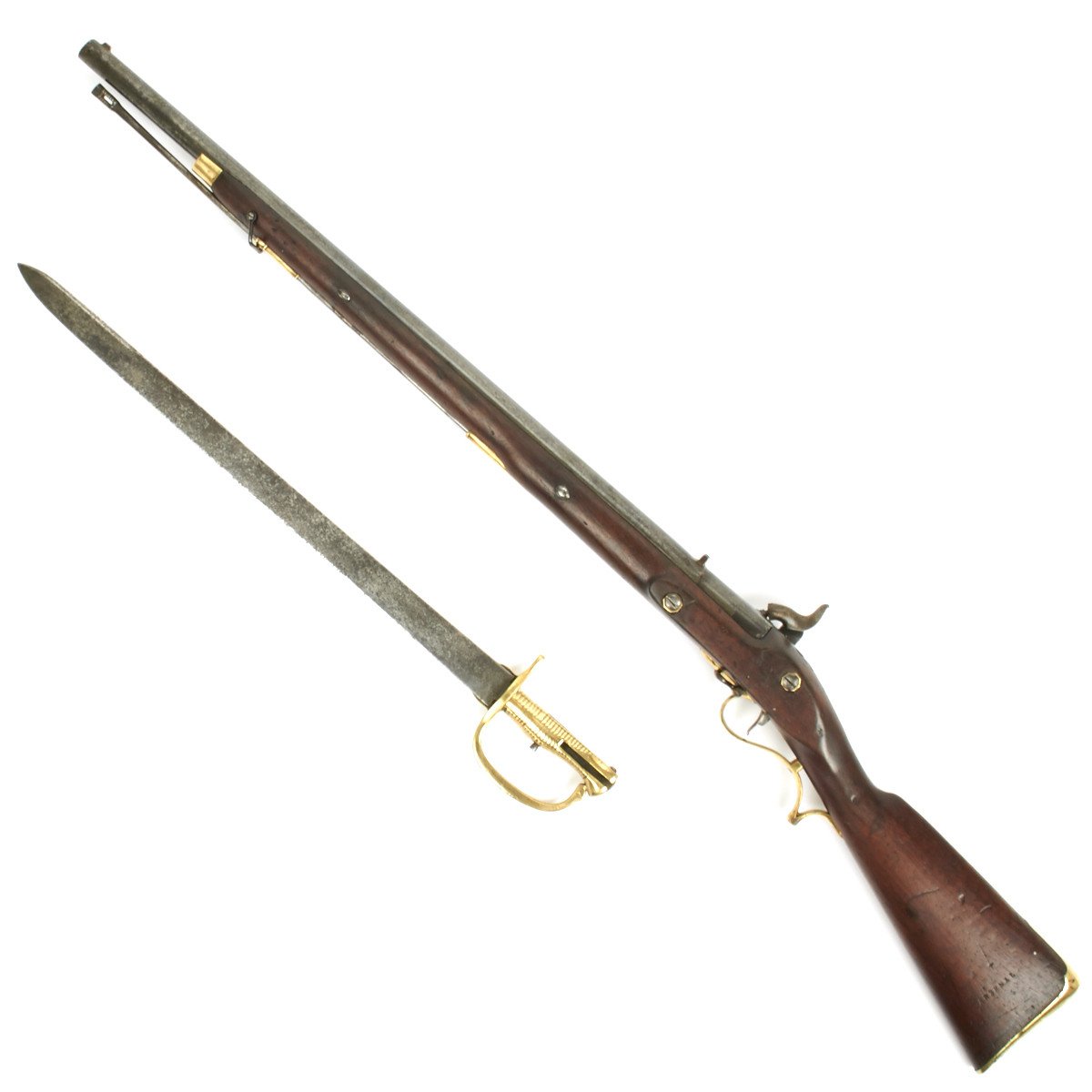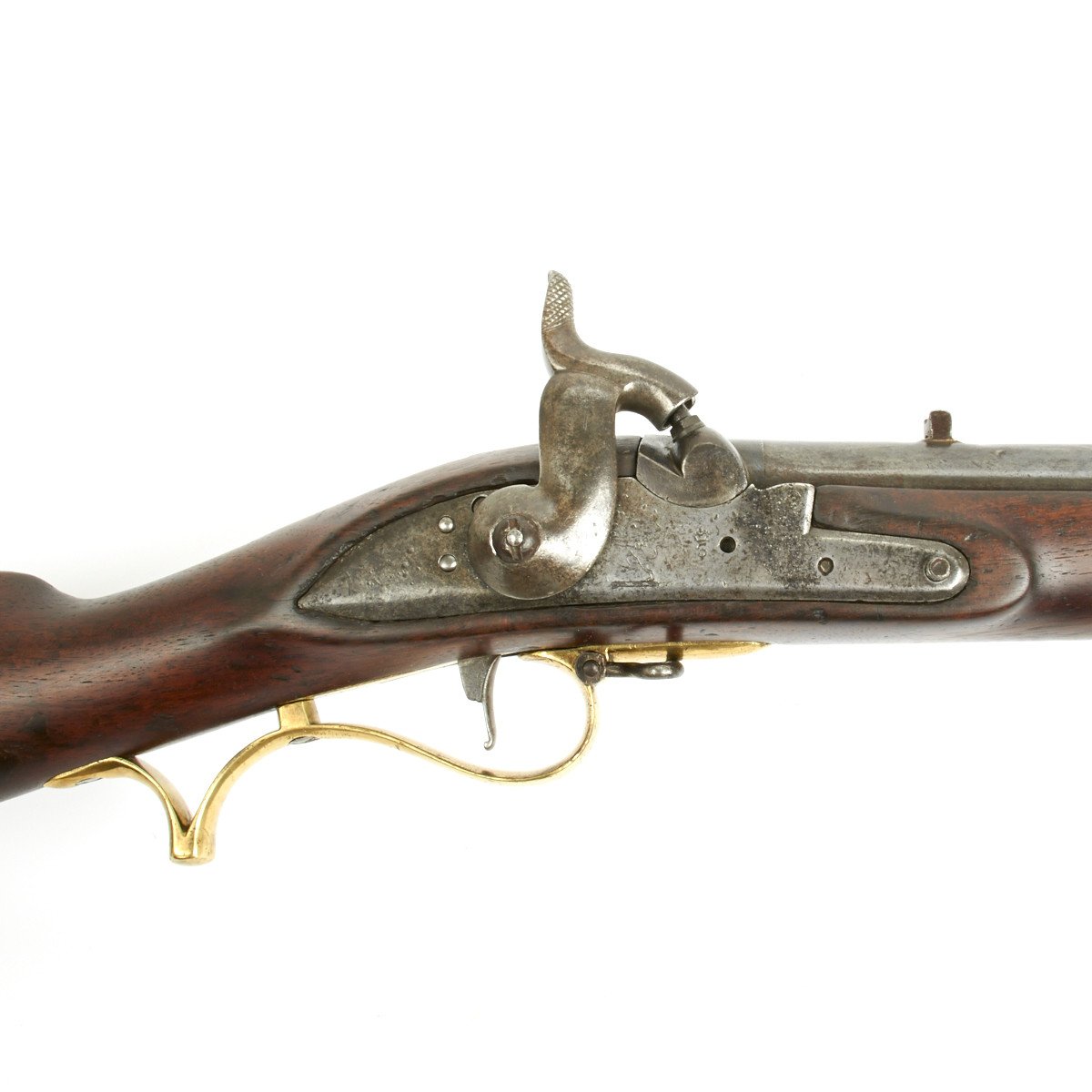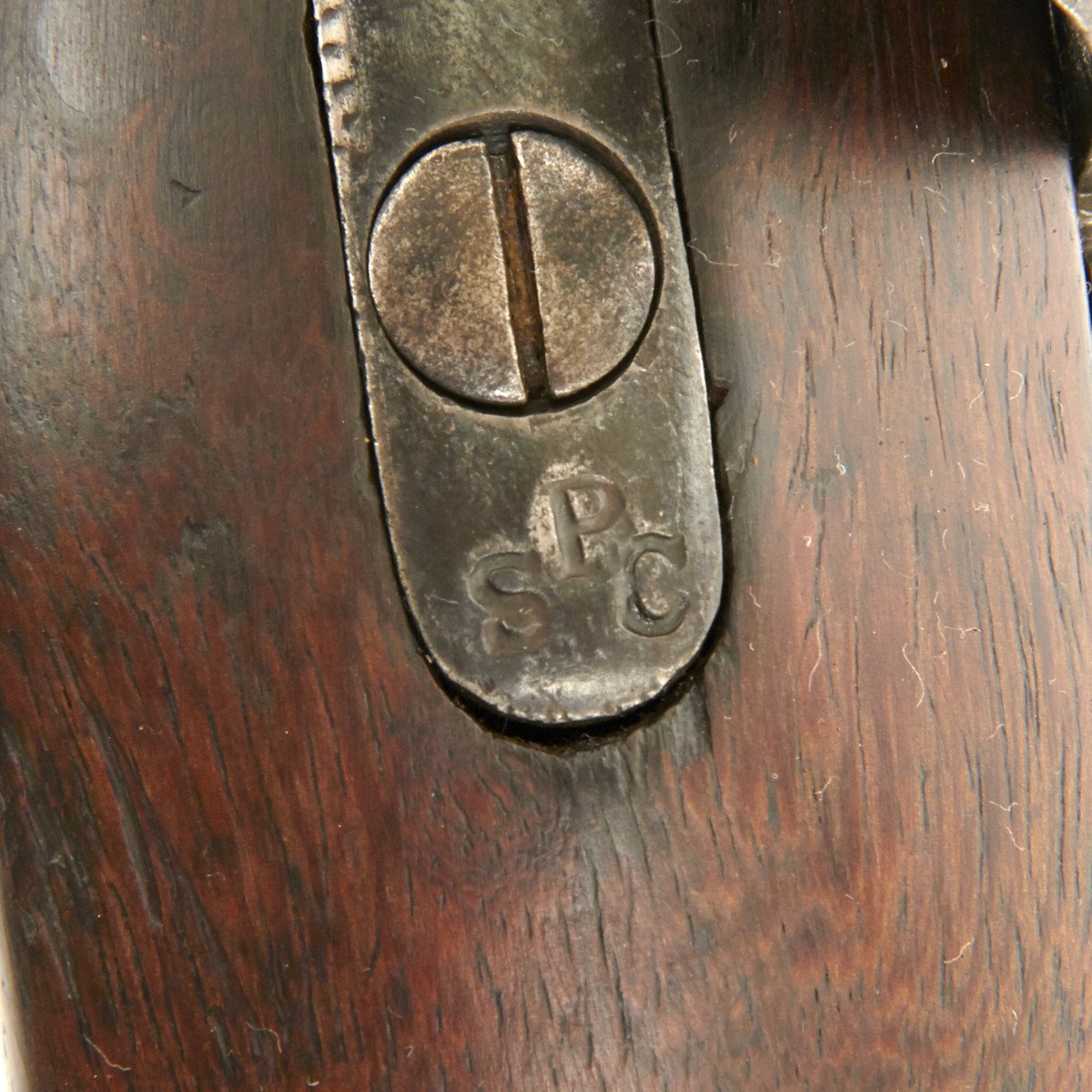Original 1856 Singapore Rifle Corps Percussion Baker Rifle with Bayonet Original Items
$ 2.995,00 $ 748,75
Original Item: Only One Available. This may be one of the rarest guns we found in the Nepalese Arsenal of Lagan Silikana in 2003. It is one of just 100 specially ordered for use by the SINGAPORE RIFLE CORPS in 1856.
At the time Singapore was administered by The Honorable East India Company (The Government of India) and in 1854 on July 8th a volunteer unit was established as the SINGAPORE VOLUNTEER RIFLE CORPS and its first parade was held on 8th of March 1855.
To equip this unit on the October 17th, 1855 a Military committee approved Colonel Bonner’s “Pattern Rifle” and an order was placed for just 100 units. This Rifle followed the minie system, was shorter than the normal infantry rifled musket, and was fitted with a Baker sword bayonet.
The order was executed and the first 30 Rifles ordered from four London makers were sent overland on January 1856, the balance of 70 pieces left by sea on the East Indiaman “Celestial” in February 1856.
The Rifles only remained in Singapore for Five years and were replaced in 1861 with the more modern P-1853 Enfield Rifles in .577 cal and those 100 Minie Pattern Rifles were then shipped to India.
Each Rifle was constructed using East India marked Flintlock locks bearing the EIC Rampant Lion but converted to the percussion system. The rifled barrel, formerly from flintlock Baker Rifles had been re-breached converting them to percussion but still retained the Baker sword bayonet stand to the right side.
Unlike the full stocked Baker and Brunswick Rifles the fore stocks ended some 6 inches behind the muzzle of the barrel with a standard nose cap. There was just one ramrod pipe and a throat pipe only. There was no side plate but standard brass butt plate and the trigger guard has the same spur grip as found on the Baker rifle. On the barrel tang, directly behind the tang screw, is marked “S.P.C.” for SINGAPORE CORPS.
These were high quality special order Rifles and the barrels are secured by two wedges as opposed to pins.
Now, of sad significance, the barrel has been later smooth bored, no doubt after arriving in India in 1861 to conform with the order that after the Sepoy Rebellion no Native Troops were to be trusted with rifled weapons. This order lasted almost until 1900.
This weapon is accompanied by its original issued Baker model (P1801) bayonet that still shows traces of the British Maker’s name DAWES & CO. on the back of the blade.
An exceptionally rare special order military percussion rifle newly constructed in 1855 from original flintlock parts for the express use of the SINGAPORE RIFLE CORPS. Later smooth bored upon arrival in India that somehow found its way to the old palace in Kathmandu, Nepal.
The whole history is very well documented in volume two of “Small Arms of the East India Company 1600-1856” by David F. Harding pages 194-195 for complete history and description of this Singapore Special Contract of which no previous example has, up until now, been found, making this an n exceptional super rare find!
Fast Shipping with Professional Packaging
Thanks to our longstanding association with UPS FedEx DHL, and other major international carriers, we are able to provide a range of shipping options. Our warehouse staff is expertly trained and will wrap your products according to our exact and precise specifications. Prior to shipping, your goods will be thoroughly examined and securely secured. We ship to thousands clients each day across multiple countries. This shows how we're dedicated to be the largest retailer on the internet. Warehouses and distribution centres can be located throughout Europe as well as the USA.
Note: Orders with more than one item will be assigned a processing date depending on the item.
Before shipping before shipping, we'll conduct a thorough inspection of the items you have ordered. Today, the majority of orders will be delivered within 48 hours. The delivery time will be between 3-7 days.
Returns
The stock is dynamic and we cannot completely manage it because multiple stakeholders are involved, including our factory and warehouse. So the actual stock may alter at any time. It's possible that you may not receive your order once the order has been made.
Our policy is valid for a period of 30 days. If you don't receive the product within 30 days, we are not able to issue a refund or an exchange.
You can only return an item if it is unused and in the same state as the day you received it. You must have the item in its original packaging.
Related products
Uncategorized
Uncategorized
Uncategorized
Uncategorized
Australian WWII Owen MK1 Machine Carbine SMG Custom Fabricated Replica with Sling Original Items
Uncategorized
Uncategorized
Uncategorized
Armoured Fighting Vehicles of the World: AFVs of World War One (Hardcover Book) New Made Items
Uncategorized
Uncategorized
Uncategorized
Uncategorized
Uncategorized
Armored Burgonet Helmet & Polearm from Scottish Castle Leith Hall Circa 1700 Original Items
Uncategorized
Uncategorized
Uncategorized
Uncategorized
Band of Brothers ORIGINAL GERMAN WWII Le. F.H. 18 10.5cm ARTILLERY PIECE Original Items
Uncategorized












































































